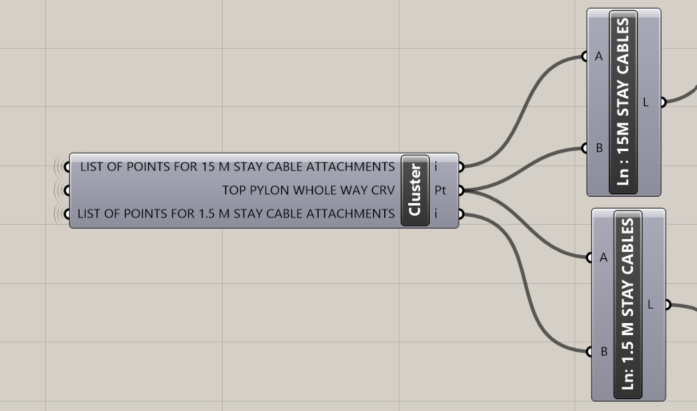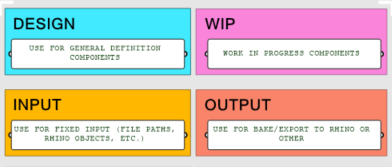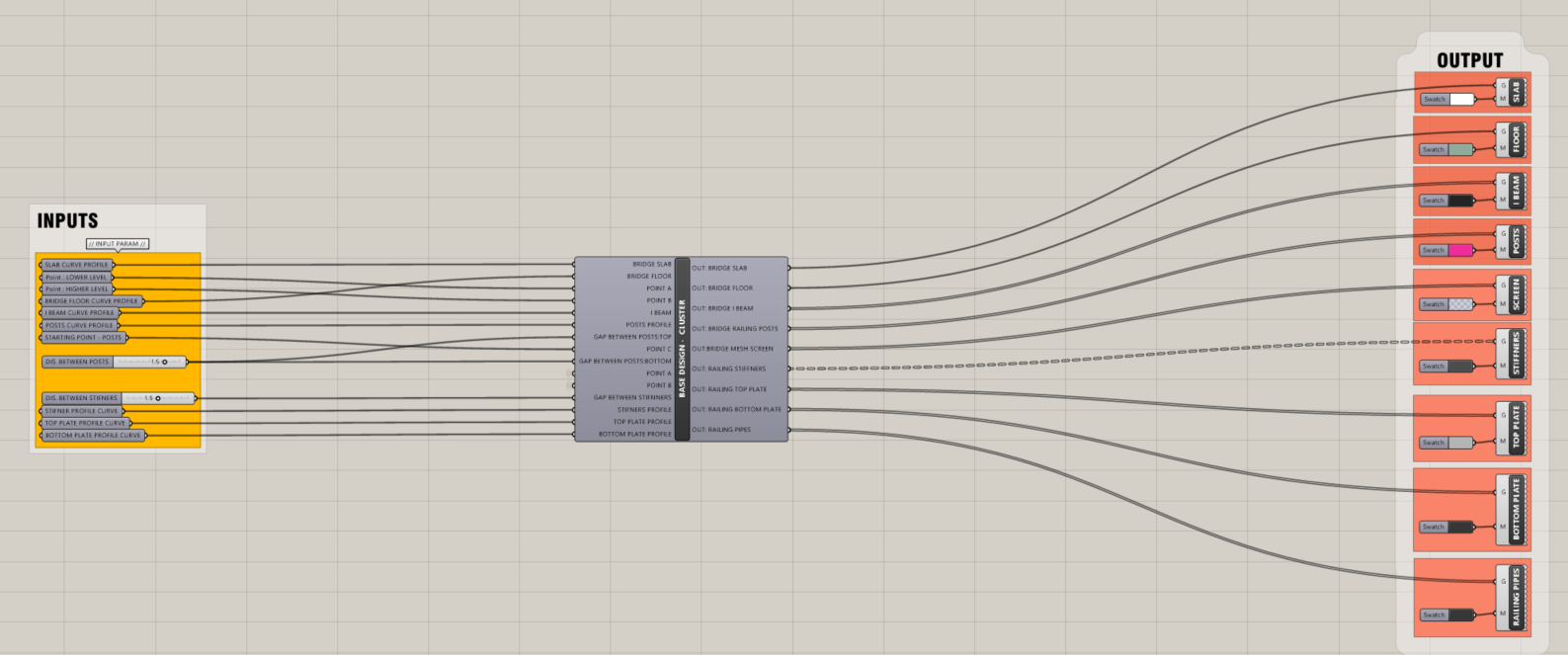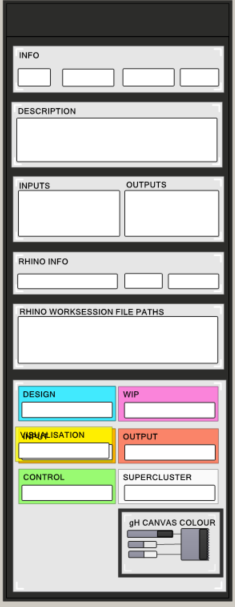As a design technologist working with a multidisciplinary team in an architecture firm, managing complex Grasshopper scripts is crucial for the success of large-scale projects. Efficient organization and readability of these scripts ensure seamless collaboration between architects, designers, and computational experts. This article provides technical strategies for managing extensive Grasshopper canvases, preserving the integrity of the base script while making it accessible for future modifications.

Snippet of gH - Rhino interface for a Bridge Design Project
1. Embrace Clustering for Modularity
Implement extensive clustering, but avoid nested clusters.
Implement extensive clustering, but avoid nested clusters.
Clustering is vital for reducing visual complexity and enhancing modularity. Group related components into clusters to encapsulate distinct functionalities. This approach simplifies the overall structure and allows for easier updates and maintenance. However, avoid creating clusters within clusters as this can lead to confusion. Maintain a flat hierarchy where each cluster serves a specific function or workflow stage.
2. Functional Grouping and Modular Connectivity
Organize components by functionality and use standardized input/output parameters for connections.
Organize components by functionality and use standardized input/output parameters for connections.
Segment your Grasshopper definition into functional groups. Place input parameters on the left and output parameters on the right within each group. This standardization minimizes interconnections, preventing the canvas from becoming a tangled mess. By clearly defining where inputs and outputs are located, you facilitate modularity and streamline the process of connecting different script segments.

Example of Clustering in Grasshopper

Example of Clustering in Grasshopper

grouping in Grasshopper
3. Efficient Navigation with Named Views and Jump Components
Utilize named views and jump components for better canvas navigation.
Utilize named views and jump components for better canvas navigation.
Large Grasshopper canvases can be challenging to navigate. Leverage named views to create quick-access points to different script sections, enhancing the overall navigational experience. Use jump components to establish shortcuts across the canvas, and relay components to reduce wire clutter. Hide wires selectively, only for non-essential inputs, to maintain clarity.
4. Iterative Refinement for Optimization
Embrace iterative refinement to enhance script efficiency.
Embrace iterative refinement to enhance script efficiency.
Large projects benefit from iterative development. Rebuilding parts of the script multiple times can lead to more streamlined and efficient solutions. Each iteration provides insights that help simplify the definition, reduce component count, and improve overall performance. Adopting an iterative approach allows continuous refinement and optimization of the Grasshopper script.

Grouping Management

Clear Communicative Script writing
5. Clear Labeling and Documentation
Label groups clearly and provide comprehensive documentation.
Label groups clearly and provide comprehensive documentation.
Effective communication is critical in a cross-functional team. Label all groups and clusters with clear, descriptive names. Include comments and annotations to explain the purpose and functionality of different script sections. This practice not only aids readability but also ensures that future team members can understand and modify the script with minimal guidance.
6. Step-by-Step Process Breakdown
Decompose the problem-solving process into clear, labeled steps.
Decompose the problem-solving process into clear, labeled steps.
Organize your script into distinct steps, each representing a phase of the problem-solving process. Label each step and add detailed comments to provide context. This method transforms the Grasshopper canvas into a visual roadmap, making it easier for team members to follow and contribute to the project.


Clear Labeling and Documentation

Clear Labeling and Documentation

Clear Labeling and Documentation

Grouping at different stages of the Script
Conclusion
Effective management of the Grasshopper canvas is essential for the success of large-scale architectural projects. By implementing clustering, functional grouping, and standardized connectivity, you can maintain a clean and modular script. Iterative refinement and clear documentation ensure the script remains accessible and editable, fostering collaboration and future-proofing your work. These technical strategies, often overlooked in academic settings, are indispensable for professional practice, enabling cross-functional teams to tackle complex design challenges efficiently.
Effective management of the Grasshopper canvas is essential for the success of large-scale architectural projects. By implementing clustering, functional grouping, and standardized connectivity, you can maintain a clean and modular script. Iterative refinement and clear documentation ensure the script remains accessible and editable, fostering collaboration and future-proofing your work. These technical strategies, often overlooked in academic settings, are indispensable for professional practice, enabling cross-functional teams to tackle complex design challenges efficiently.
For design technologists and architects working with Grasshopper and other visual programming languages, these practices are invaluable. Implementing these strategies enhances workflow efficiency, improves team collaboration, and ensures the long-term maintainability of your projects.
Submitted !